- BOAT OF THE YEAR
- Newsletters
- Sailboat Reviews
- Boating Safety
- Sails and Rigging
- Maintenance
- Sailing Totem
- Sailor & Galley
- Living Aboard
- Destinations
- Gear & Electronics
- Charter Resources
- Ultimate Boating Giveaway


Beneteau 43
- By Jeremy McGeary
- Updated: March 27, 2008
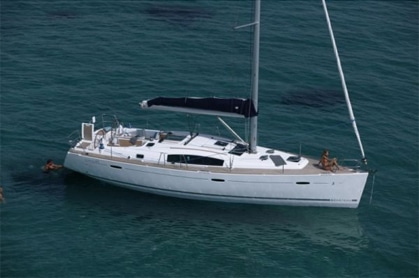
At the 2006 U.S. Sailboat Show, when Beneteau announced with great fanfare its new line of cruising boats with interiors designed by Nauta Design, a firm of, well, interior designers, the cynics in the audience responded with an almost audible “Uh-oh.”
Perhaps they were remembering the late 1980s, when “decorators” forced sailors to live among curved surfaces-hard to do on the level, never mind heeled at 20 degrees. To everyone’s relief, the most recent approach by Beneteau has proven to be refreshingly rectilinear, and the resulting layouts are both practical and comfortable. In the Beneteau 43, the benefits of the design approach are immediately apparent, and the result is an arrangement that includes all the essential elements in almost exquisite proportion.
Forward, the V-berth cabin has walk-about room, a dressing seat, a variety of stowage, and a private head and shower compartment. In the two-cabin version, the complementary cabin aft, on the starboard side, has a huge athwartships berth in addition to standing room and ample places to stow clothes and personal effects. This cabin has its own door to the main head, which contains a shower stall.
The saloon offers a large table with seating on three sides. Both settees are long enough to lie on, and lee cloths will make them comfortable sea berths. A small, though adequate, aft-facing chart desk at the foot of the port settee completes the setting. A continuous line of lockers tucked under the side decks ties the entire area together visually and extends to the galley, furnishing it with numerous eye-level storage cabinets. The hinge-down doors appear a little close to the stovetop, but in all other respects, the galley seems utterly seaworthy. It’s tucked aft, to port of the companionway, where a well-braced cook can reach the necessities: stove, front-opening fridge, top-loading freezer, drawers, and work surfaces fittingly guarded with solid fiddles.
The companionway is well proportioned, and the immediate area on entering the cabin offers plentiful handholds: stainless-steel bars on either side of the ladder and on the head partition, plus the galley fiddles. However, further handholds to facilitate passage forward from the galley would be useful.
The decor includes the cabin sole, which is similar in color and texture to the bulkheads. To maintain uniformity in appearance, the floorboards fit flush, with no lifting rings or latches. On the boat tested, the smaller lift-out boards over such items as the speed transducer had finger holes, but the section next to the saloon table had to be lifted with the aid of a suction cup. Doing so reveals a very flat, shallow bilge and a sump just large enough to accommodate the bilge pump, a Rule-Mate rated to handle 1,100 gallons per hour.
While a deeper sump has its advantages, flat bilges are indicative of a shallow canoe body, which, for a given draft, allows more salient depth of keel and thus more bite for windward work. This is especially helpful when geography makes a necessity of the optional shoal-draft keel.
Flat bilges are also indicative of a hull shaped like that of a dinghy. Dinghies like to be sailed flat, and displacement boats of similar hull form do, too. Under full sail on a day of variable airs, whenever the breeze climbed into the upper teens, I was surprised to find that the boat didn’t heel much, suggesting that the keel and the stiff, beamy hull work well together.
The standard headsail is a 140-percent genoa, so the first step in reducing sail when on the wind would be to roll it up a little. We didn’t, as the breeze, though variable, wasn’t gusty; when necessary, we took hardness out of the helm by simply easing the mainsheet traveler. It took little effort to trim the jib, and careful placement of the primary winches makes that possible from the helm, so one person can tack the boat. The mainsail controls are on the cabin wings, two strides away.
The wind profile across the Potomac River allowed us to see the boat broad-reach at 7.8 knots in 17 knots true and at 5.8 knots in less than 12 knots. On the wind, it was only a little slower. Powering at full throttle (3,200 rpm), it achieved an impressive 8.5 knots, and at 2,000 rpm it quietly managed a mile-eating 6.2 knots.
When sailing, the broad cockpit with twin steering stations gave me the feeling of being on a much bigger boat, a feeling seemingly contradicted by the facility with which the 43 handled. The owner, Mark Rickey, said that making the step up from a 34-footer had been easier than he and his wife, Mary Lou, had expected and that the Beneteau’s longer legs let them now plan on daysailing to destinations 45 miles distant, a considerable extension of their weekend cruising radius.
Stepping out of the cockpit to go forward requires minimal acrobatics, but the handrails on the cabin trunk could be improved-you can’t close a hand or tie a line around them-and they terminate at the shrouds. Beneteau installs padeyes as harness points in the cockpit and on the forward corners of the cabin trunk so that jacklines can be run inboard.
In the cockpit, the robust table provides a footrest for the seated and a brace for the upright; subtly angled planes in the sole provide traction for the helmsman’s feet. Built-in shelves and a floor prevent the huge locker under the port seat from becoming an utter black hole for deck matter. Another locker under the starboard helm seat provides access to the steering, the propane locker is under the port helm seat, and a European Union-approved life-raft locker opens onto the transom platform.
Even a measured venture like Beneteau’s into “designer”-styled interiors will raise some functional idiosyncrasies, but the Berret Racoupeau design team has vested the sailboat side of the Beneteau 43 with manners and grace.
Beneteau 43 Specs
LOA: 43′ 0″ LWL: 38′ 1″ Beam: 13′ 6″ Draft: 6′ 7″/5′ 5″ Sail Area 767 Displacement: 19,566 Water: 95 gal Fuel: 53 gal Engine: Yanmar 54 hp Designer: Berret/Racoupeau Beneteau 843-629-5307 www.beneteauusa.com
Jeremy McGeary is a Cruising World contributing editor. To read more Cruising World reviews of Beneteau sailboats, click here . To visit Beneteau America’s website, click here .
- More: 2001 - 2010 , 41 - 50 ft , beneteau , Coastal Cruising , keelboat , monohull , Sailboat Reviews , Sailboats
- More Sailboats
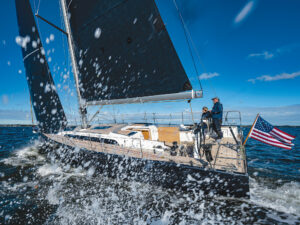
Sailboat Review: Solaris 44
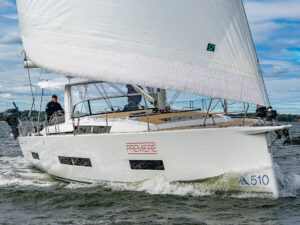
Sailboat Review: Hanse 510
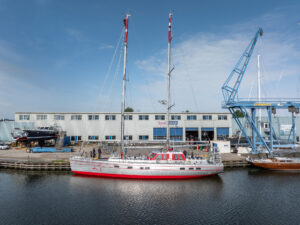
The Pelagic 77 Amundsen is Delivered
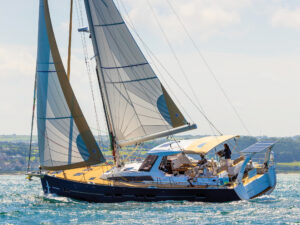
New Boats on Deck

Island Memories and Ice Runs: A Sailor’s Caribbean Tale

The Ship’s Library: Add These Essential Reads for Caribbean Cruising
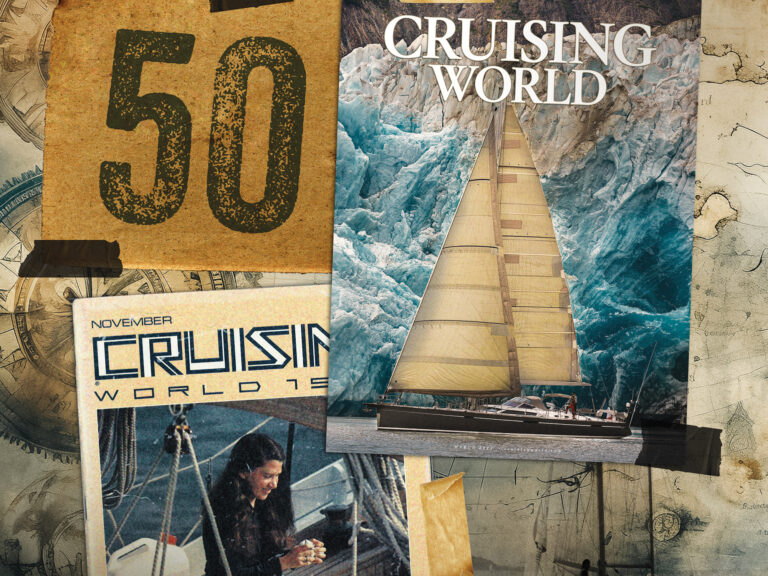
Gold Standard: Cruising World Turns 50
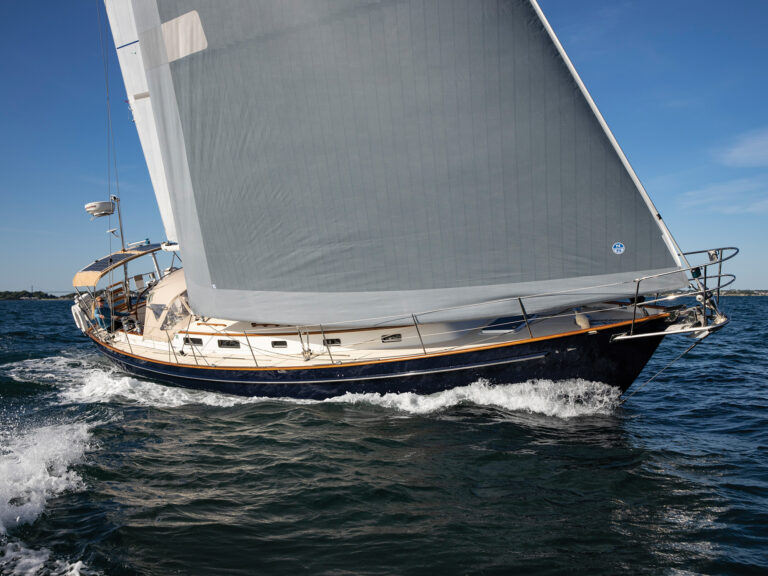

More, Please: Life After Six Months at Sea
- Digital Edition
- Customer Service
- Privacy Policy
- Terms of Use
- Email Newsletters
- Cruising World
- Sailing World
- Salt Water Sportsman
- Sport Fishing
- Wakeboarding
Great choice! Your favorites are temporarily saved for this session. Sign in to save them permanently, access them on any device, and receive relevant alerts.
- Sailboat Guide
Beneteau 43
Beneteau 43 is a 43 ′ 0 ″ / 13.1 m monohull sailboat designed by Berret-Racoupeau and built by Beneteau starting in 2006.

Rig and Sails
Auxilary power, accomodations, calculations.
The theoretical maximum speed that a displacement hull can move efficiently through the water is determined by it's waterline length and displacement. It may be unable to reach this speed if the boat is underpowered or heavily loaded, though it may exceed this speed given enough power. Read more.
Classic hull speed formula:
Hull Speed = 1.34 x √LWL
Max Speed/Length ratio = 8.26 ÷ Displacement/Length ratio .311 Hull Speed = Max Speed/Length ratio x √LWL
Sail Area / Displacement Ratio
A measure of the power of the sails relative to the weight of the boat. The higher the number, the higher the performance, but the harder the boat will be to handle. This ratio is a "non-dimensional" value that facilitates comparisons between boats of different types and sizes. Read more.
SA/D = SA ÷ (D ÷ 64) 2/3
- SA : Sail area in square feet, derived by adding the mainsail area to 100% of the foretriangle area (the lateral area above the deck between the mast and the forestay).
- D : Displacement in pounds.
Ballast / Displacement Ratio
A measure of the stability of a boat's hull that suggests how well a monohull will stand up to its sails. The ballast displacement ratio indicates how much of the weight of a boat is placed for maximum stability against capsizing and is an indicator of stiffness and resistance to capsize.
Ballast / Displacement * 100
Displacement / Length Ratio
A measure of the weight of the boat relative to it's length at the waterline. The higher a boat’s D/L ratio, the more easily it will carry a load and the more comfortable its motion will be. The lower a boat's ratio is, the less power it takes to drive the boat to its nominal hull speed or beyond. Read more.
D/L = (D ÷ 2240) ÷ (0.01 x LWL)³
- D: Displacement of the boat in pounds.
- LWL: Waterline length in feet
Comfort Ratio
This ratio assess how quickly and abruptly a boat’s hull reacts to waves in a significant seaway, these being the elements of a boat’s motion most likely to cause seasickness. Read more.
Comfort ratio = D ÷ (.65 x (.7 LWL + .3 LOA) x Beam 1.33 )
- D: Displacement of the boat in pounds
- LOA: Length overall in feet
- Beam: Width of boat at the widest point in feet
Capsize Screening Formula
This formula attempts to indicate whether a given boat might be too wide and light to readily right itself after being overturned in extreme conditions. Read more.
CSV = Beam ÷ ³√(D / 64)
Deep Keel: draft 6.58’/2.0m Disp. 5456 lbs./2479 kg
Embed this page on your own website by copying and pasting this code.
- About Sailboat Guide
©2024 Sea Time Tech, LLC
This site is protected by reCAPTCHA and the Google Privacy Policy and Terms of Service apply.

IMAGES
VIDEO